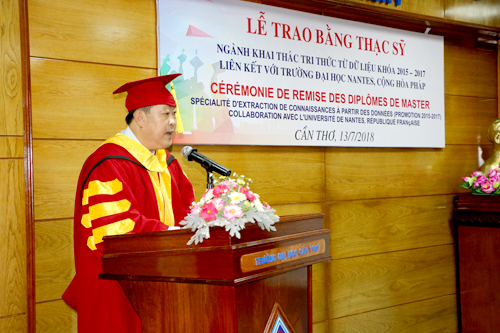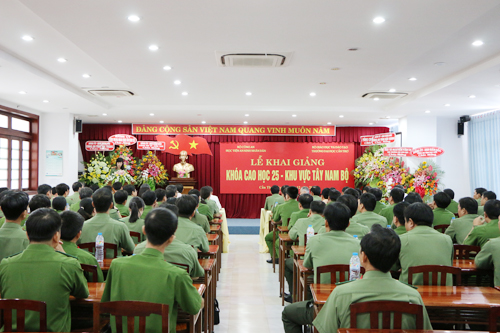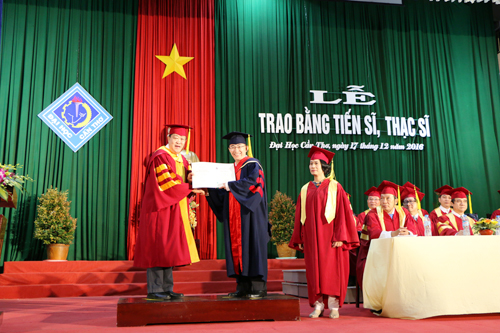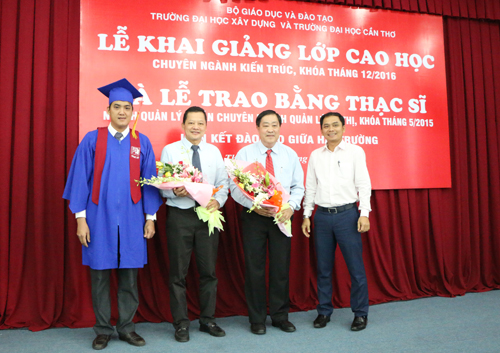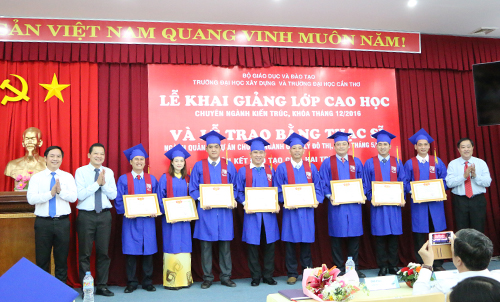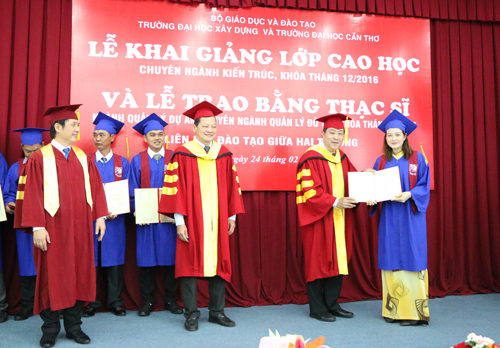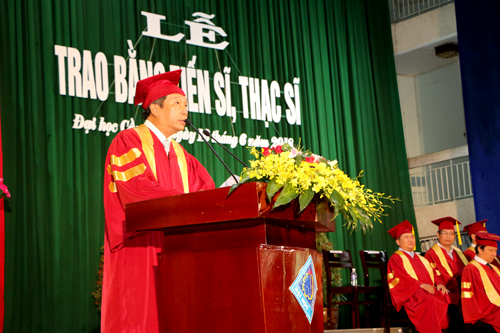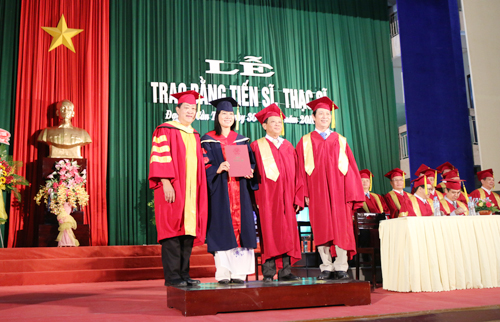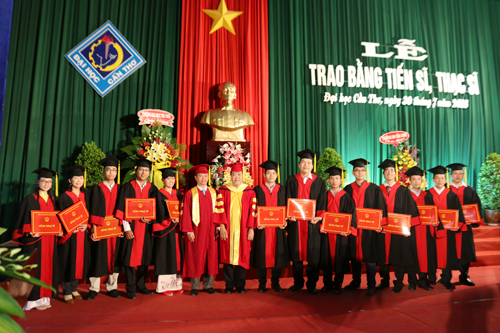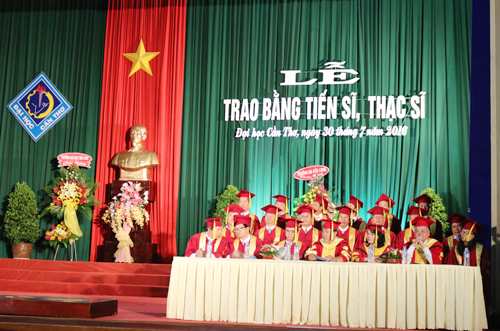
 Tên đề tài: “Ứng dụng công nghệ sinh học xử lý rác hữu cơ phục vụ sản xuất nông nghiệp, tỉnh Sóc Trăng”.
Tên đề tài: “Ứng dụng công nghệ sinh học xử lý rác hữu cơ phục vụ sản xuất nông nghiệp, tỉnh Sóc Trăng”.
 Tác giả: Mai Thi, Khóa: 2012
Tác giả: Mai Thi, Khóa: 2012
 Chuyên ngành: Vi sinh vật học; Mã số: 62420107. Nhóm ngành: Khoa học sự sống.
Chuyên ngành: Vi sinh vật học; Mã số: 62420107. Nhóm ngành: Khoa học sự sống.
 Người hướng dẫn chính: PGS.TS. Nguyễn Hữu Hiệp - Trường Đại học Cần Thơ
Người hướng dẫn chính: PGS.TS. Nguyễn Hữu Hiệp - Trường Đại học Cần Thơ
- Tóm tắt nội dung luận án
Mục tiêu của luận án là phân lập và tuyển chọn các dòng vi khuẩn bản địa để xử lý sinh học rác hữu cơ và sử dụng thành phẩm sau xử lý trong sản xuất nông nghiệp. Để hoàn thành các mục tiêu của luận án, các kỹ thuật truyền thống cũng như kỹ thuật sinh học phân tử hiện đại đã được sử dụng để phân lập và định danh các dòng vi khuẩn có khả năng phân hủy cellulose, tinh bột và protein từ rác hữu cơ, ruột con sùng đất và trùn đất. Kết quả có 213 dòng vi khuẩn đã được phân lập. Khuẩn lạc của các dòng vi khuẩn đa số có dạng tròn hoặc không đều, độ nổi mô hay lài, bìa nguyên hay răng cưa, màu trắng hay trắng sữa; tế bào vi khuẩn phần lớn hình que ngắn, chuyển động và Gram dương. Hai mươi dòng vi khuẩn triển vọng có hoạt tính enzyme cellulase, amylase và protease mạnh được chọn để giải trình tự gen 16S rRNA bằng kỹ thuật sinh học phân tử. Tất cả các dòng vi khuẩn đều thuộc chi Bacillus gồm Bacillus subtilis (6 dòng), Bacillus megaterium (5 dòng), Bacillus cereus (2 dòng), Bacillus flexus (2 dòng), Bacillus aquimaris (2 dòng), Bacillus aryabhattai (1 dòng), Bacillus licheniformis (1 dòng) và Bacillus sp (1 dòng). Mối quan hệ di truyền của những dòng vi khuẩn này đã được xác lập. Các dòng vi khuẩn triển vọng của luận án và 3 chế phẩm sinh học ngoại nhập đã được sử dụng để xử lý rác thải hữu cơ (ủ phân hữu cơ vi sinh) tại bãi rác xã Đại Ngãi, huyện Long Phú, tỉnh Sóc Trăng. Sự biến động về mật số vi khuẩn phân hủy, độ pH, nhiệt độ cho thấy sự hoạt động tích cực của vi khuẩn trong các mẻ ủ. Thành phần của phân hữu cơ vi sinh thành phẩm đáp ứng được các yêu cầu về hàm lượng C, N, K và chỉ số C/N khi tham chiếu với tiêu chuẩn quy định về chất lượng phân hữu cơ vi sinh của Việt Nam TCVN 7185.2002. Phân hữu cơ vi sinh của luận án được dùng để bón cho dưa leo (Cucumis sativus L.) và giúp giảm 50% phân hóa học trong khi các chỉ tiêu như chiều dài trái, đường kính trái, trọng lượng trái, số trái/cây, ngày ra hoa và ngày thu hoạch khác biệt không có ý nghĩa thống kê so với cách bón phân truyền thống ở địa phương (100% phân hóa học).
- Những kết quả mới của luận án
Hai trăm mười ba dòng vi khuẩn bản địa đã được phân lập có khả năng phân hủy cellulose, tinh bột và protein. Trong đó, hai mươi dòng có khả năng phân hủy cellulose, tinh bột và protein triển vọng nhất được định danh dựa vào đặc điểm hình thái, sinh hóa và kỹ thuật sinh học phân tử và đều thuộc chi Bacillus.
Việc sử dụng những dòng vi khuẩn triển vọng của luận án thử nghiệm xử lý rác thải hữu cơ tại bãi rác Đại Ngãi cho kết quả khả quan và hiệu quả xử lý không thua kém những chế phẩm ngoại nhập. Việc thử nghiệm bón phân hữu cơ vi sinh trên cây dưa leo cho thấy phân hữu cơ vi sinh sau khi ủ với các dòng vi khuẩn triển vọng của luận án có hiệu quả ứng dụng nhất định.
- Các ứng dụng/khả năng ứng dụng trong thực tiễn, các vấn đề cần tiếp tục nghiên cứu
Khả năng ứng dụng trong thực tiễn:
Luận án đã phân lập được nhiều dòng vi khuẩn phân hủy cellulose, tinh bột và protein triển vọng có thể dùng để xử lý rác hữu cơ.
Bón phân hữu cơ vi sinh của luận án cho cây dưa leo giúp giảm lượng phân hóa học so với cách trồng cũ ở địa phương. Phân hữu cơ vi sinh từ luận án có thể được sử dụng trong thực tiễn vì có hiệu quả nhất định và thân thiện với môi trường.
Các vấn đề cần tiếp tục nghiên cứu:
Nghiên cứu phân lập thêm nguồn vi khuẩn phân hủy cơ chất cellulose, tinh bột và protein trên các đối tượng côn trùng khác như mối, đuông, tằm ăn dâu nhằm làm phong phú nguồn vi khuẩn bản địa phục vụ xử lý rác thải.
Tiếp tục nghiên cứu thành phần chất mang, tỷ lệ phối trộn các dòng vi khuẩn và điều kiện tồn trữ thích hợp để sản xuất chế phẩm sinh học phục vụ xử lý ô nhiễm hữu cơ.
- Thesis summary
The purpose of this thesis is isolation and selection of indigenous bacterial strains for the bio-degradation of organic waste and application of its products for agricultural production. The traditional techniques as well as modern molecular techniques were used for the isolation and identification of cellulose, starch or protein degrading bacterial strains from organic waste samples, liquid samples of organic waste, gut of Holotrichia parallela and Lumbricus terrestris. Two hundred and thirteen bacterial strains were isolated. Most of bacterial colonies were round or irregular, converx or raised elevation, entire margin and white color. Bacterial cells were almost short rods, motile and Gram positive. Twenty promising strains which had good cellulase, amylase and protease activity were chosen for 16S rRNA gene sequencing using molecular biology technique. All of them belonged to Bacillus genus including Bacillus subtilis (6 strains), Bacillus megaterium (5 strains), Bacillus aquimaris (2 strains), Bacillus cereus (2 strains), Bacillus flexus (2 strains), Bacillus aryabhattai (1 strain), Bacillus licheniformis (1 strain) and Bacillus sp. (1 strain). The phylogenetic relationship of these bacterial strains was analysed. The promising strains and 3 imported bio-products were applied in organic waste treatment (composting bio-fertilizer) at organic waste collection station at Dai Ngai commune, Long Phu district, Soc Trang province. The fluctuation of beneficial bacteria density, pH, temperature of the compost showed that bacteria effectively worked during composting. The final product of bio-fertilizer containing carbon, potassium, nitrogen content and C/N met the requirement of Vietnamese standard of quality of biofertilizer (TCVN 7185.2002). Our bio-fertilizer was then applied in growing cucumber (Cucumis sativus L.) and helped to reduce 50% of chemical fertilizer while the parameters such as fruit length, fruit diameter, fruit weight, fruits/tree, flowering dates and harvesting dates were not significantly different from traditional local fertilizering (100% of chemical fertilizers).
- Research creativeness
Two hundred and thirteen indigenous bacterial strains isolated were capable of decomposing cellulose, starch and protein. In which, the twenty promising bacterial strains perfoming the outstanding degradabilities of cellulose, starch, or protein were identified as the Bacillus bacteria based on morphological, biochemical and molecular biology characteristics.
The use of the twenty promising bacterial strains in the organic waste composting at Dai Ngai landfill has showed satisfactory results and efficiency comparable to imported products. The experiment of applying microorganic organic fertilizer on cucumber pointed out that microorganic compost after incubation with the promising bacterial strains of the thesis had a certainly useful effect.
- Practical implications and further research
Practical implications:
The thesis isolated many bacterial strains able to degrade cellulose, starch and protein and they could be manipulated in organic waste treatment.
The application of the promising bacterial strains from the thesis in cucumber crops resulted in the reduction of the chemical fertilizer amount compared to the old fertilizing way in local cucumber fields. Microbiological compost from the thesis could be used practically as a result of its effectiveness and environmental friendliness.
Further research:
Research on cellulolytic, amylolytic and proteolytic bacteria on other insect species such as crayfish, worms and silkworms to enrich the source of indigious bacteria for organic waste treatment.
Research on carrier, rate of mixing of bacterial strains and appropriate storage conditions for the production of bioproducts for organic pollution treatment
- Xem chi tiết nội dung luận án
- Xem thông tin đăng tải tại Website Bộ giáo dục và Đào tạo. (Nhập tên NCS vào ô tìm kiếm)





